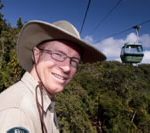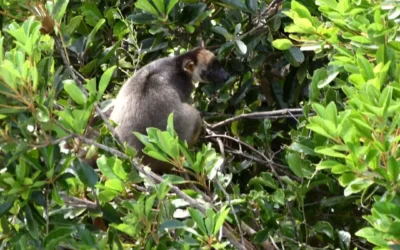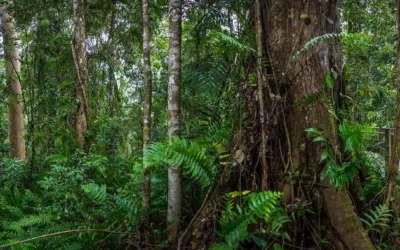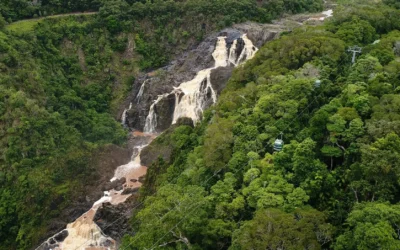Life in the Rainforest Canopy
Travelling on Skyrail Rainforest Cableway provides visitors the opportunity to experience the rainforest from both above and below the rainforest canopy at different stages of their journey.
When we walk in a rainforest we don’t tend to pay too much attention to what’s going on in the trees above us. Much like sitting on a glass bottom boat on the Great Barrier Reef, looking down from above we are not only aware of fish and other animals moving on the reef below, but also the birds, islands and environment at our own level.
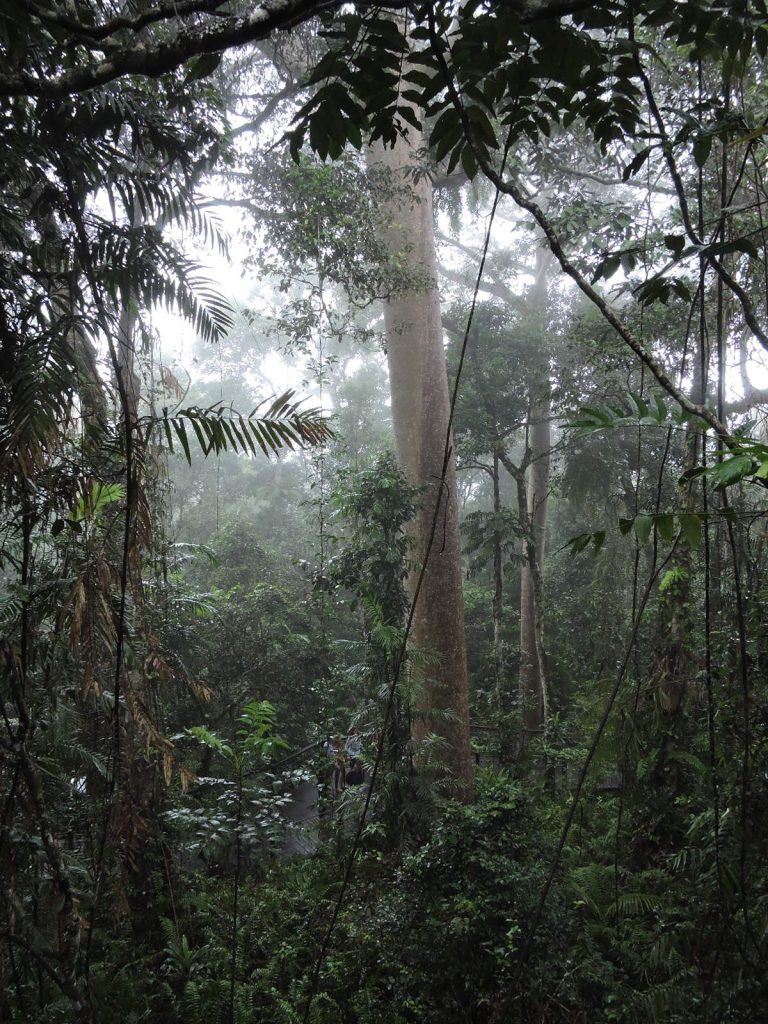
But what difference can a bunch of trees really make to who’s who in the rainforest and why do some animals and plants live their lives up above it all?
The rainforest has four layers, the forest floor, the understory layer, the canopy and the emergent layer.
One thing that is consistent in tropical rainforest the world round, is that life in the canopy is by far the richest in terms of numbers of species. There is plenty of light, but due to the dry periods, Australian rainforests have trees that have developed strategies to avoid drying out. Leaves can be moderately leathery and in some cases, like laurels, the leaves have a layer of heavy wax. By far the most common strategy to avoid losing too much water due to intense sunlight and wind burn is to point the leaves downward and shrink them (think of the classic sickle shaped gum leaves of eucalypts, hanging like pendulums to catch very little hot midday sun, but lots of cool morning and evening rays).
Canopy trees tend to have large leaves with lots of chlorophyll when saplings, due to the low light conditions on the forest floor and slightly higher humidity. Once they reach the canopy the leaves shrink and bleach a little bit. These trees become the frame of a whole new three dimensional world, like the sprawling branches of a coral reef or the high-rise apartments of a city. Animal life is often abundant up here.
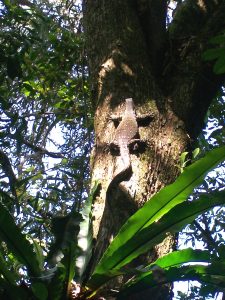
There are generally plenty of birds and bats, especially flying foxes. This is the layer where most of the tree dwelling mammals live, including various possum species and tree kangaroos. Where there are plenty of Basket Ferns (Drynaria rigidula: Polypodiaceae) there are usually plenty of reptiles. Occasionally lace monitors will climb to the top of the canopy to catch unsuspecting birds and mammals and to sun themselves on cool mornings (cool by tropical Cairns standards).
Leaf-tail Geckoes are often found just below the canopy at night. Insects here are often camouflaged, looking like leaves, flowers, bark or bird droppings. During the Wet Season you will also occasionally find tree frogs. It is important to note that many species never leave the canopy during their life cycle, and are therefore still being discovered by science regularly (think of Sean Connery as the jungle scientist in Medicine Man).
Life in the sub-canopy is slightly more gentle as far as access to light goes but they also have shade to help keep cool.
Apart from small trees that never grow into the canopy and are adapted to the lower light conditions the most important plants in this layer are vines and epiphytes. Vines use trees to make their way up toward the canopy, employing different ways to climb. Methods include adventitious roots, twining (occasionally employing rough bark surfaces to aid in climbing), spines (like Rattans and Lawyer Canes or Wait a While’s) and leaf tendrils (Supple jack). One species, the Candleberry (Pothos longipes: Araceae), never reaches the canopy. Another, the Native Monstera (Epipremnum pinnatum: Araceae), starts out as a vine and once it reaches the canopy it severs its roots and becomes an epiphyte. Epiphytes are unique in growing on a tree without having any roots in the ground nor does it harm the tree.
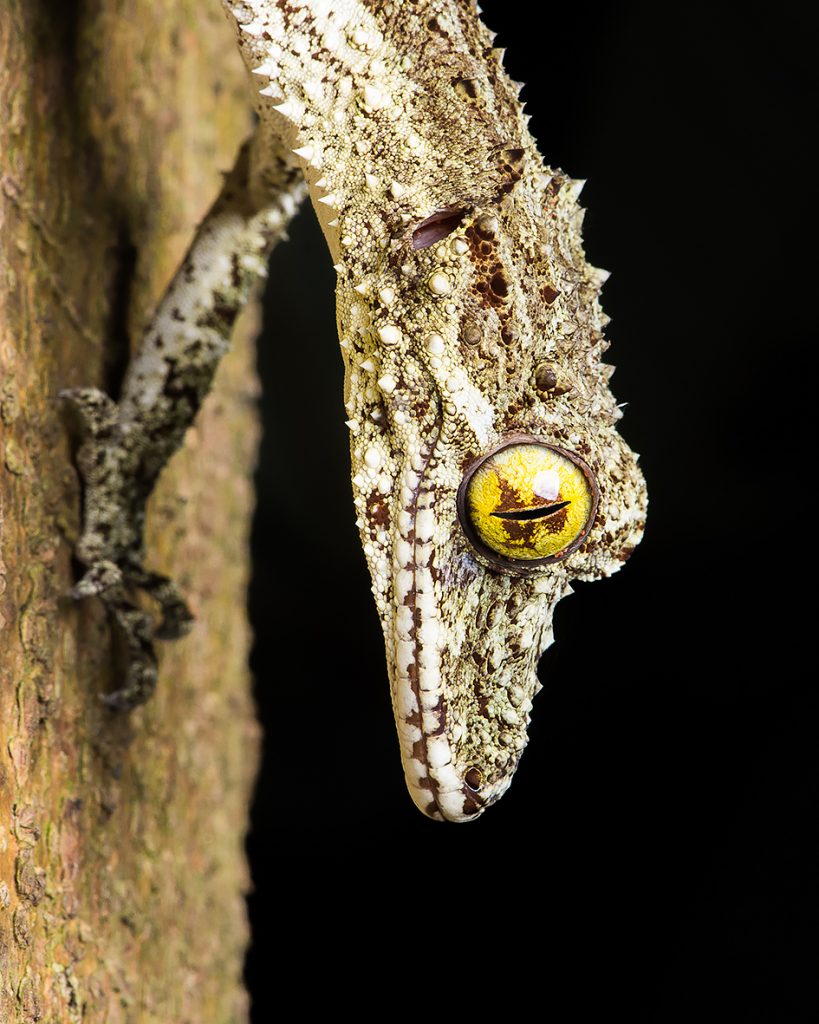
Living in the canopy can be a challenging lifestyle. For epiphytic plants, despite having access to more sunlight, especially in small gaps, the lack of regular access to water and minerals presents a big problem. As a result many epiphytes, especially orchids, have thick leathery leaves and share their life with fungi, with each organism supporting the life of the other. Water is generally stored in various ways. Minerals are obtained from falling leaves and dust in the air.
Ferns are generally dormant during dry periods and appear to be dead. Should dry periods be too prolonged some ferns can die. Animals, including insects, birds, mammals, reptiles and amphibians call this arboreal world home. Whether they be permanent residents, like the cuddly green possums our work crews sometimes see at night at Red Peak Station, or visitors to the tree tops like spotted-tailed quolls that include climbing in their nocturnal activity, they all show adaptations for exploring the tree tops.
If your looking for adaptations that can help in a tree dwelling lifestyle you don’t need to look far. Pet cats have strong sharp retractable claws, people have opposing thumbs that can grab branches and in both cases its our wonderful binocular vision that enables us to determine how far we can jump to the next tree, very important if you have a six year old boy like I do who can’t go past a good tree every time we go to the park.
Until next time, don’t forget to look up, you never know who might be looking down…
Australian Rainforest Facts by Environmental Ranger Lance Neville
